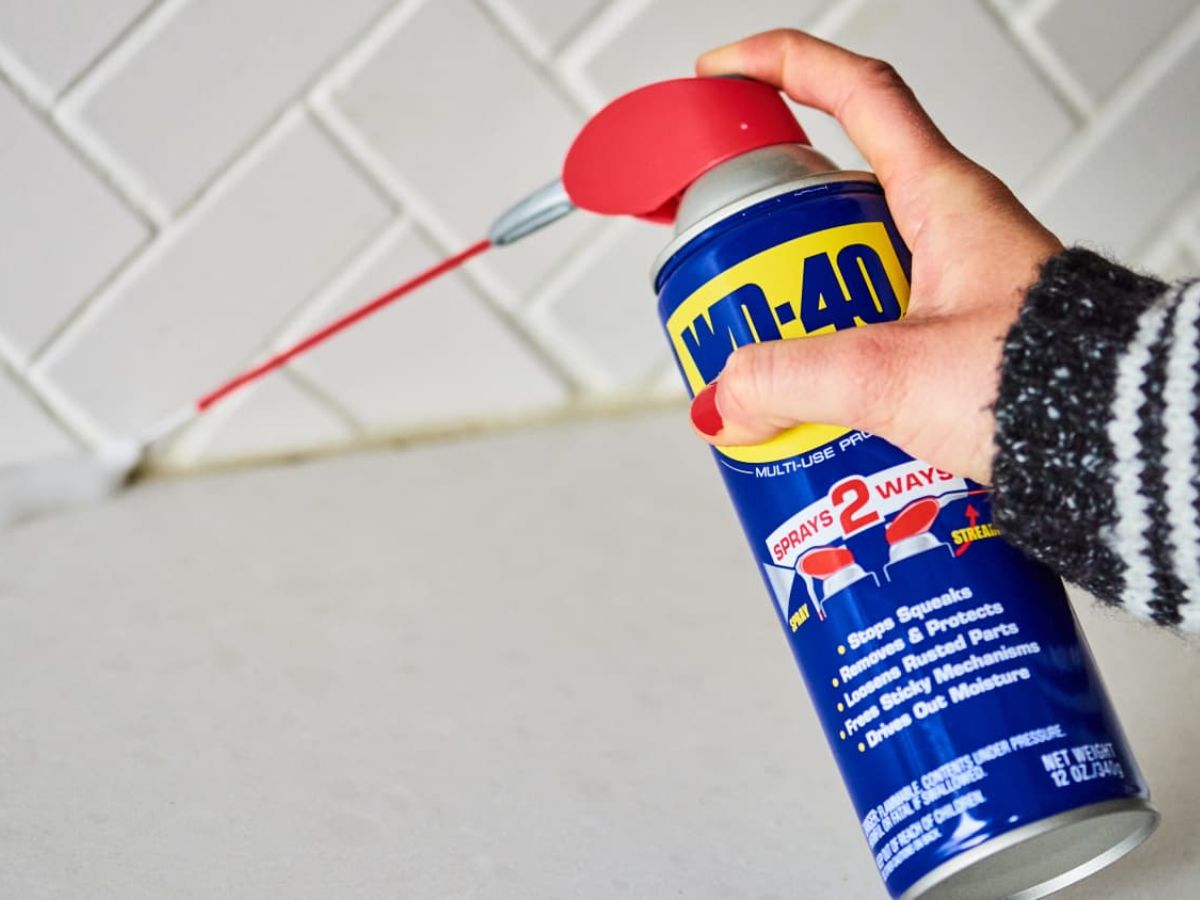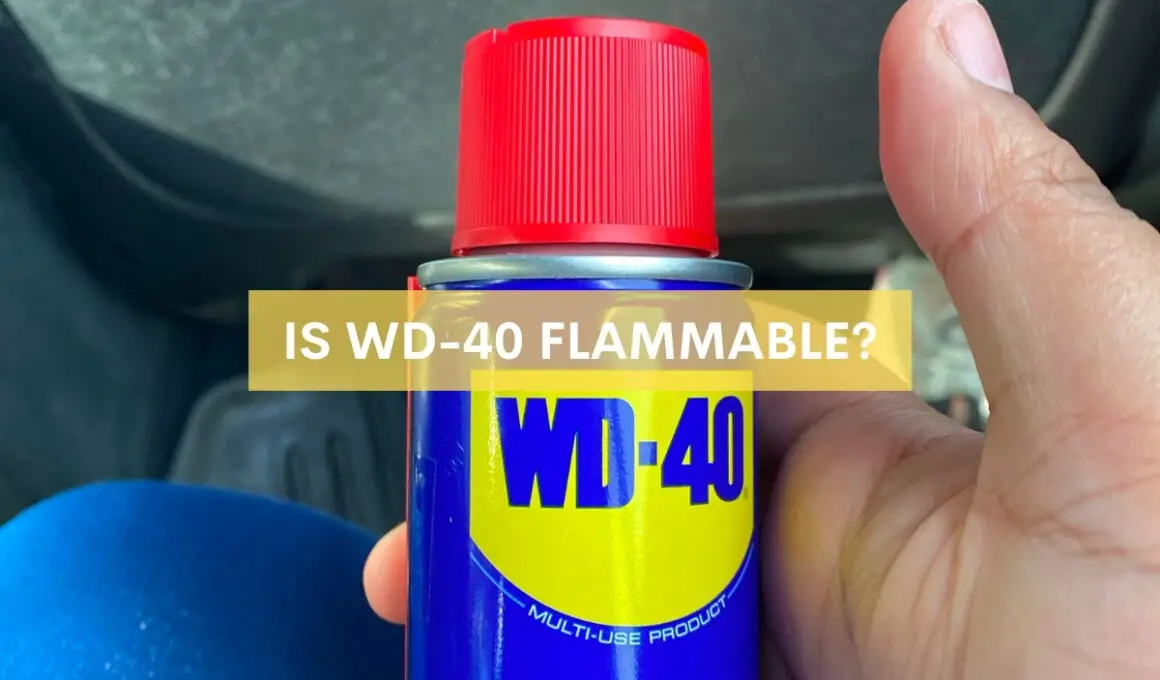In This Article Show
Key Points
- WD-40 is flammable due to its hydrocarbon composition.
- Always use WD-40 in well-ventilated areas and store away from open flames.
- Numerous alternatives to WD-40 are available, depending on specific needs.
As someone knee-deep in grease, bolts, and engine parts for over 13 years, I’ve come to appreciate the tools and products that make a mechanic’s life easier. And one golden tin has been by my side for most of my career: WD-40.
Widely recognized for its blue and yellow can, WD-40 is almost iconic in workshops around the globe. But as both a seasoned mechanic and a blogger, I often encounter a pressing question about this miracle worker: “Is WD-40 flammable?“
We’re about to dive deep into the world of WD-40, not just as a lubricant but understanding its characteristics, especially its flammability. It’s essential information, and we’ll break It down together in this post. Let’s dig in.
Understanding the Composition of WD-40
Whenever you’re using a product, especially one that’s as versatile as WD-40, it’s crucial to have a basic understanding of its composition. Knowing what’s inside that familiar blue and yellow can helps us make informed decisions about its use and safety.
1. Primary Components
At its core, WD-40 is made up of a blend of hydrocarbons. These are essentially compounds made of hydrogen and carbon. While it might sound complex, hydrocarbons are found in many products we use daily, from fuel to cleaning agents.
2. Propellant
To get that familiar spray when you press down on the nozzle, WD-40 uses a propellant. This is what pushes the liquid out, allowing it to reach those hard-to-get places.
3. Mineral Oil
This component provides the lubrication properties we so dearly love in WD-40. Mineral oil is distilled from petroleum and plays a significant role in reducing friction between surfaces.
4. Inhibitors
These are added to prevent rust and corrosion. So, when you spray WD-40 on that squeaky hinge or rusted bolt, it’s the inhibitors that work to protect the metal from further degradation.
5. Fragrance
Yes, even WD-40 has a bit of fragrance added to it! This doesn’t play a role in its performance but does give it that recognizable scent.
Now that we’ve broken down the main components of WD-40, we can dive deeper into its properties, particularly its flammability, ensuring we use this handy product safely and effectively.

Is WD-40 Flammable?
The straightforward answer to this much-asked question is: Yes, WD-40 is flammable.
Now, let’s delve into the why and what it means for users:
1. Role of Hydrocarbons
As mentioned earlier, WD-40 is predominantly made up of hydrocarbons. These hydrocarbons can ignite when exposed to an open flame or a high-temperature source. This is the primary reason for the product’s flammable nature.
2. Flammability Rating
Products like WD-40 often come with a flammability rating. For WD-40, it’s considered to have a ‘2’ rating on a typical scale of 0 to 4. This means it has a moderate risk of flammability. In practical terms, it won’t spontaneously combust or ignite under normal conditions, but it can catch fire if you introduce an open flame or sparks.
3. Warnings on the Can
If you ever take a moment to inspect the label on a WD-40 can, you’ll notice clear warnings about its flammability. The manufacturer explicitly states to keep the product away from open flames, sparks, or hot surfaces.
In summary
While WD-40 is an incredibly useful tool in a multitude of situations, it’s vital to treat it with respect regarding its explosive properties. Knowing and understanding its characteristics ensures that we can benefit from its many uses while maintaining safety.
How to Use WD-40 Safely
WD-40, as versatile as it is, requires certain precautions to ensure you and those around you remain safe during its usage. Let’s discuss some best practices:
1. Proper Ventilation
Always use WD-40 in well-ventilated areas. Not only does this minimize the inhalation of its fumes, but it also reduces the risk of accumulating flammable vapors that could ignite.
2. Distance from Open Flames
Remember, WD-40 is flammable. So, please keep it away from open flames, stoves, candles, or any other sources of ignition. This includes not spraying it near running engines or other hot machinery parts.
3. Use with Suitable Equipment
If you’re using WD-40 on electrical components, make sure the equipment is turned off and unplugged. Avoid using it near spark-producing tools or devices.
4. Storage
Once you’re done, storing your can of WD-40 in a cool, dry place away from sunlight is essential. This ensures the product remains effective and reduces any fire hazard risks.
5. Avoid Inhalation & Direct Contact
Try not to inhale the product directly while working. Also, wearing gloves can prevent prolonged skin contact. If it gets in your eyes, rinse thoroughly and seek medical advice.
6. Safe Disposal
Don’t just toss an empty WD-40 can in the trash. It’s best to dispose of it following local regulations for aerosol cans, ensuring environmental safety.
By following these guidelines, you can harness all the incredible benefits of WD-40 while ensuring that your work environment remains hazard-free.
Alternatives to WD-40
While WD-40 is a renowned and widely-used product, there are situations where you might be seeking an alternative, either due to preference or specific requirements. Here are some of the popular options to consider:
1. Silicone Lubricants
Unlike WD-40, silicone lubricants don’t contain petroleum-based materials. This makes them less prone to drying out or attracting dirt. They’re especially great for rubber, plastic, and wood.
2. White Lithium Grease
This thicker, long-lasting lubricant is ideal for heavy-duty applications. White lithium grease might be your go-to if you’re dealing with items that bear a lot of weight or pressure, like garage doors or car parts.
3. Graphite Lubricants
These are perfect for lock mechanisms. Graphite doesn’t attract dust or gum up the lock over time, ensuring smoother functionality.
4. Teflon-based Lubricants
Teflon (PTFE) offers excellent lubrication under extreme conditions. These lubricants are generally long-lasting and resistant to high temperatures.
5. Penetrating Oils
While WD-40 has some penetrating properties, other specialized penetrating oils are in the market. These products are specifically designed to loosen rusted or stuck parts.
6. 3-In-One Oil
This general-purpose lubricating oil can be used in many of the same applications as WD-40. It offers rust protection and reduces wear on moving parts.
7. Non-Flammable Lubricants
For those particularly concerned about flammability, non-flammable lubricants are available. Though they might not have the exact properties of WD-40, they offer peace of mind in environments where fire risks are a concern.
While WD-40 is a fantastic all-around tool, knowing the alternatives allows you to select the right product for the job. Always assess the requirements of your task and the properties of the lubricant or product you’re considering.













